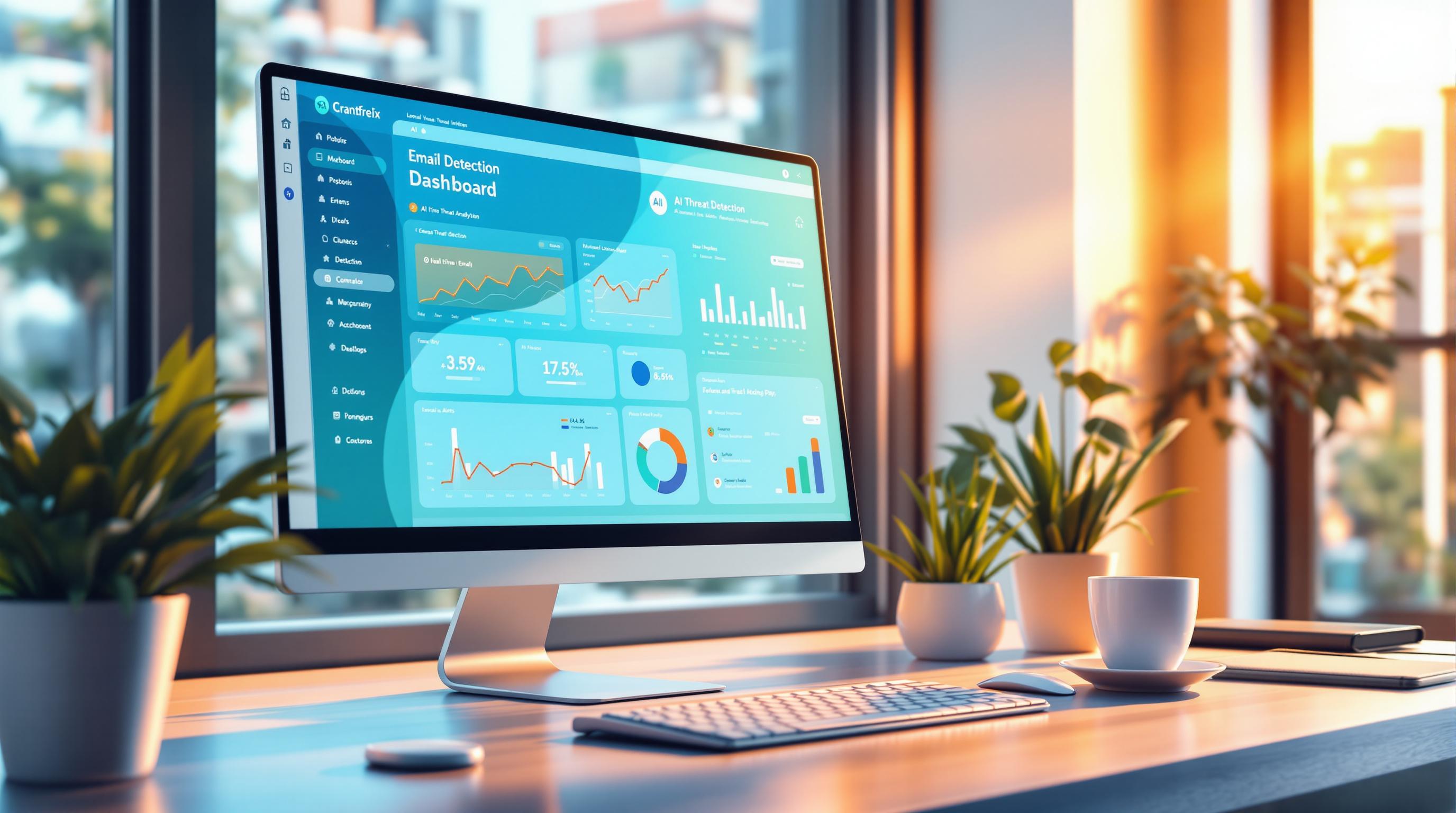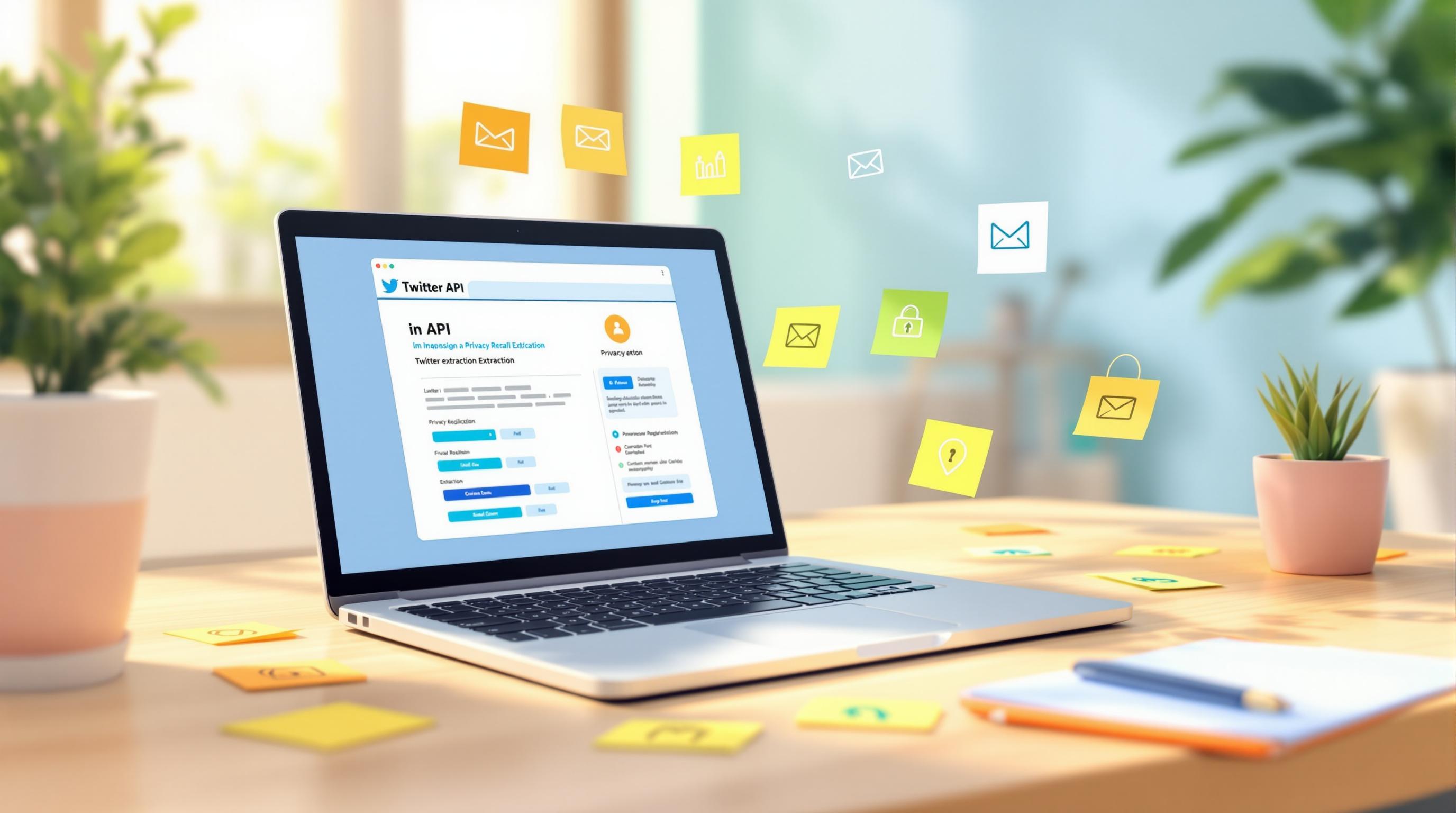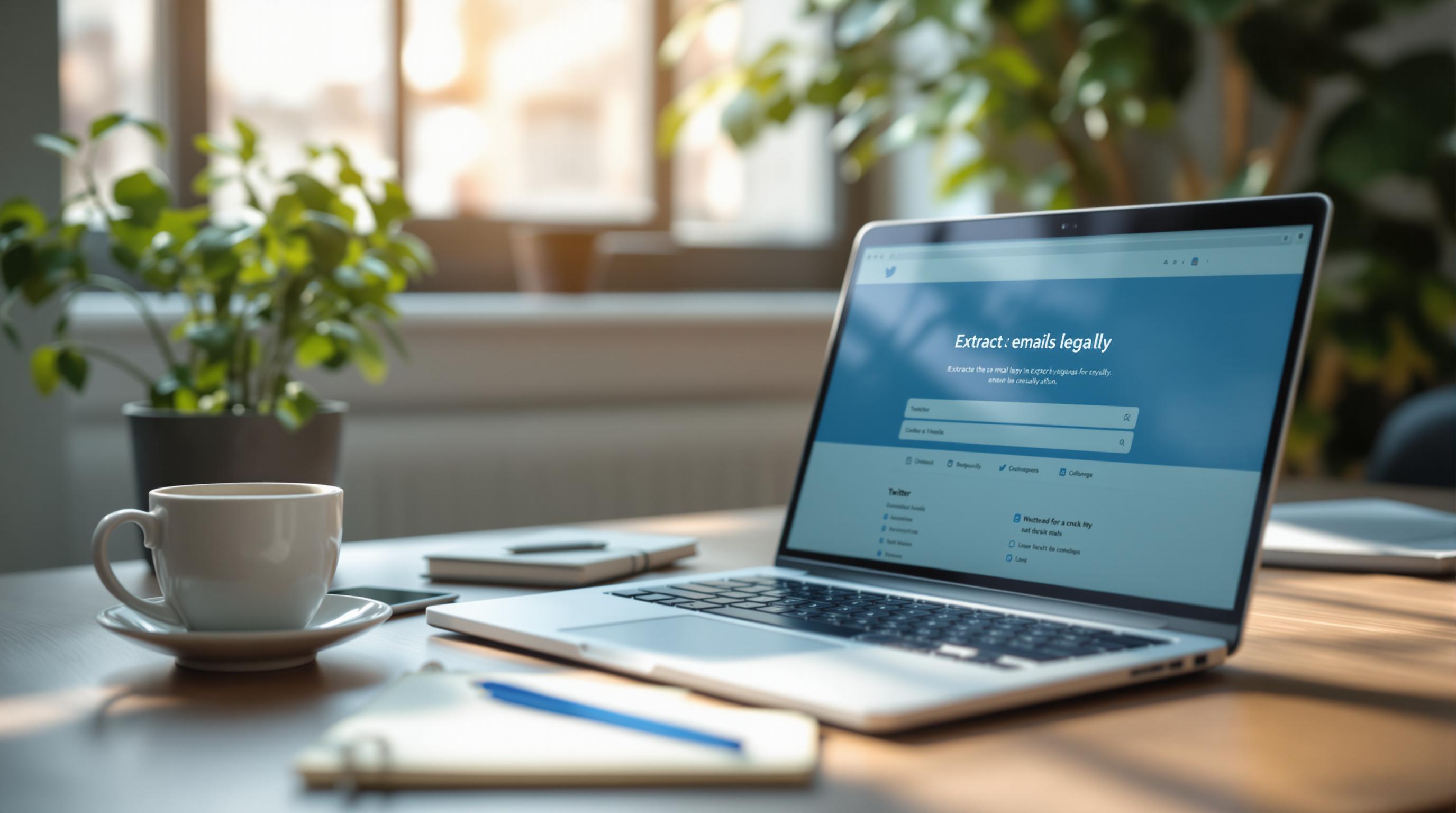Email scraping can help businesses grow, but it must comply with the California Consumer Privacy Act (CCPA). Under the CCPA, email addresses are considered personal information, and mishandling them can lead to fines and loss of trust. Here’s what you need to know:
- Transparency: Inform users about data collection and usage.
- Consumer Rights: Allow users to opt-out, delete, or correct their data.
- Data Protection: Use strong security measures to protect information.
Key CCPA Rules for Email Scraping:
- Who Must Comply:
- Businesses with over $25M annual revenue.
- Companies processing data of 50,000+ consumers.
- Those earning 50%+ of revenue from data sales.
- Consent Requirements:
- Explicit opt-in for minors (13-16 years old) or parental consent for children under 13.
- Purpose Limitation:
- Use data only for disclosed purposes.
- Timely Requests:
- Fulfill deletion or opt-out requests within 15-45 days.
Practical Steps to Stay Compliant:
- Clearly disclose data practices in privacy policies.
- Obtain and document user consent.
- Limit data collection to what’s necessary.
- Encrypt and secure all collected data.
- Use CCPA-compliant email scraping tools with opt-out mechanisms and audit trails.
Quick Tip: Even public email data requires transparency and opt-out options. Non-compliance risks hefty penalties and reputational damage. Stay proactive by integrating CCPA rules into your processes.
Overview of CCPA Rules and Their Effect on Email Scraping
What Does the CCPA Cover?
The California Consumer Privacy Act (CCPA) sets strict rules for businesses handling personal information. It applies to companies that meet any of the following criteria:
| Business Criteria | Requirement |
|---|---|
| Annual Revenue | More than $25 million |
| Data Volume | Processes data of 50,000 or more consumers |
| Data Sales | Earns 50% or more of revenue from selling personal data |
Main Rules Businesses Must Follow
If your business involves email scraping, you need to ensure your practices comply with the CCPA. Here are the key requirements:
Transparency Requirements
- Clearly explain data collection and usage in privacy policies.
- Specify how email addresses are collected, shared, or sold.
- Disclose any sharing of scraped email addresses with third parties [1][5].
Consumer Rights Protection
The CCPA provides consumers with specific rights regarding their data. Businesses must have systems in place to honor these rights, as shown below:
| Right | Business Obligation |
|---|---|
| Right to Know | Clearly disclose data collection practices upfront. |
| Right to Delete | Process deletion requests within 45 days. |
| Right to Opt-Out | Offer clear options for consumers to stop data sales. |
Special Rules for Minors
The law imposes additional safeguards for minors:
- For users aged 13-16, businesses must obtain explicit opt-in consent.
- For users under 13, parental consent is required [5].
Purpose Limitation
Scraped email addresses can only be used for the purposes disclosed at the time of collection. Using the data for any other purpose violates CCPA rules [1].
The CCPA doesn’t outright ban email scraping, but it requires businesses to handle data responsibly. This includes keeping detailed records of consent, offering opt-out options, and adhering to strict data management practices. By following these guidelines, businesses can balance their operational needs with consumer privacy rights [1][3].
Next, we’ll dive into practical steps to ensure your email scraping methods align with CCPA requirements.
Steps to Make Email Scraping CCPA-Compliant
To align your email scraping practices with CCPA regulations, you need to focus on protecting consumer privacy while maintaining efficiency. Here’s how you can meet the necessary standards:
Be Transparent and Get Consent
Let users know how their data will be collected and used before scraping emails. Consent is key, and here’s how you can handle it effectively:
| Requirement | How to Implement It |
|---|---|
| Clear Disclosure | Provide a privacy policy that explains data usage in detail. |
| Explicit Consent | Use opt-in forms that clearly state how emails will be used (e.g., marketing, newsletters). |
| Accessible Information | Make privacy details available with a single click. |
| Documentation | Keep records of consent and data collection activities. |
"Consent must be freely given: Essentially, you cannot have manipulated or coerced the consumer into giving consent for you to use their private information" [4].
Limit the Data You Collect
Stick to collecting only the data you truly need. Here’s how to keep it lean:
- Conduct regular audits to ensure you’re only holding relevant information.
- Delete any unnecessary data as soon as possible.
Using tools that are designed with privacy laws in mind can make it easier to manage and minimize the data you collect.
Protect the Data You Collect
Keeping scraped email data secure is non-negotiable. Here are some key measures to adopt:
| Security Measure | Purpose |
|---|---|
| Encryption and Storage | Encrypt data and store it securely to prevent unauthorized access. |
| Access and Audit Controls | Limit access to authorized personnel and conduct regular audits. |
| Breach Response Plan | Have a clear plan in place to handle potential data breaches. |
Stay ahead of security risks by updating your protection measures regularly. Conducting periodic security assessments is also essential to ensure your practices remain effective [3][1].
Legal Guidelines for Email Scraping
Understanding the legal aspects of email scraping is crucial to avoid penalties, especially when considering compliance with laws like the CCPA.
Public vs. Private Data Sources
The source of the data plays a key role in email scraping. Even publicly available email addresses require consent under the CCPA.
| Data Source Type | CCPA Requirements |
|---|---|
| Public Sources | Requires transparency and an opt-out option; includes business websites and directories |
| Private Sources | Requires explicit consent; covers customer databases and subscription lists |
| Third-Party Data | Requires disclosure and verification of purchased lists and partner databases |
"Even for public data, consent is required because the CCPA considers email addresses as personal information, and consumers have the right to control their data" [1][3].
For public data, businesses must still inform users about their collection practices and respect opt-out rights. Transparency is key, regardless of the data source. When scraping emails from public sources, make sure to:
- Clearly notify users about data collection
- Explain the purpose of collection in your privacy policy
- Provide simple opt-out options
- Keep detailed records of your data collection practices
Avoid Using Non-Compliant Tools
Choosing compliant tools for email scraping is critical to meeting CCPA requirements. Using tools that don’t align with these standards can lead to legal and reputational risks [3][5].
| Compliance Feature | Why It Matters |
|---|---|
| Transparency Controls | Ensures users are informed about data collection practices |
| Opt-Out Mechanism | Allows users to exercise their rights under the CCPA |
| Data Security | Protects collected data from unauthorized access |
| Documentation | Keeps a record of consent and data handling processes |
Opt for tools that include features like privacy controls, opt-out options, data deletion capabilities, and strong security protocols.
Grasping these legal requirements is just the start. Up next, we’ll dive into selecting tools that make compliance easier.
sbb-itb-8abf799
How to Choose a CCPA-Compliant Email Scraping Tool
Picking the right email scraping tool means balancing technical functionality with compliance requirements. The tool must meet CCPA standards while addressing your business goals.
Email Extractor Tool - Extract Emails with AI Automation

The Email Extractor Tool uses AI to automate tasks like compliance checks, identifying public vs. private data, and offering flexible export options. It's designed to work for businesses of all sizes. Key compliance features include distinguishing between public and private data, integrating opt-out mechanisms, and ensuring secure data handling.
Here’s how AI automation supports compliance:
- Detecting restricted data
- Managing consent processes
- Handling opt-out requests
- Offering secure export options
- Keeping detailed audit trails
Features to Look for in Email Scraping Tools
When assessing email scraping tools for CCPA compliance, focus on these key features:
| Compliance Features | Implementation |
|---|---|
| Security Measures | Encryption, secure storage, access controls |
| Consent Management | Opt-out options, consent tracking |
| Documentation | Audit trails, verified data sources |
"The CCPA mainly requires an opt-out mechanism, selling or sharing data requires an opt-in process if the users are minors" [5].
Look for tools that clearly document their compliance measures, enforce strong security practices, and automate checks to avoid errors. An ideal tool should offer:
- Clear compliance documentation
- Strong security protocols
- Automated compliance checks
- Streamlined consent management
- Safe data handling procedures
These features are especially important for businesses with annual revenues over $25 million, as they are directly subject to CCPA regulations [5].
Summary of Key Points
Meeting CCPA requirements for email scraping involves focusing on transparency, managing consent, and safeguarding data. Here’s what businesses need to prioritize:
Transparency and Consent
Businesses must clearly explain how they collect, use, and share data, including retention periods and third-party involvement. This helps consumers understand how their information is handled [1][2].
Data Security
Strong security measures are essential for protecting scraped email data. This includes using encryption and secure storage systems to prevent unauthorized access [1][2].
Consumer Rights and Requests
Companies need to offer easy opt-out options, respond quickly to data-related requests, and maintain accurate consent records. These steps align with CCPA's focus on consumer protection [1][2].
Ongoing Compliance
Regular audits and updates to policies ensure businesses stay compliant. It's also important to distinguish between public and private data, as private data requires explicit consent before collection or use [2][6].
Although the CCPA doesn’t mandate opt-in consent for marketing emails, it does require clear communication about privacy and data rights [1][2]. Tools like Email Extractor Tool can simplify compliance by automating tasks like data management and tracking consent.
FAQs
Does CCPA require opt-in for marketing emails?
When it comes to email marketing consent, CCPA operates differently from GDPR. Instead of requiring opt-in consent, CCPA uses an opt-out model. This means businesses don't need explicit opt-in consent for marketing emails but must meet certain requirements:
- Include clear unsubscribe options in every email.
- Process opt-out requests within 15 days [1][2].
- Be transparent about data collection and usage practices.
- Follow CAN-SPAM Act rules to stay compliant.
Important Note: If the consumer is between 13 and 16 years old, explicit opt-in consent is necessary for selling or sharing data. For children under 13, parental consent is required [5].
Steps for Compliance:
- Keep a record of opt-out requests and update privacy policies to reflect these practices.
- Strengthen data security to protect consumer information.
- Respond promptly to consumer requests to ensure compliance.



